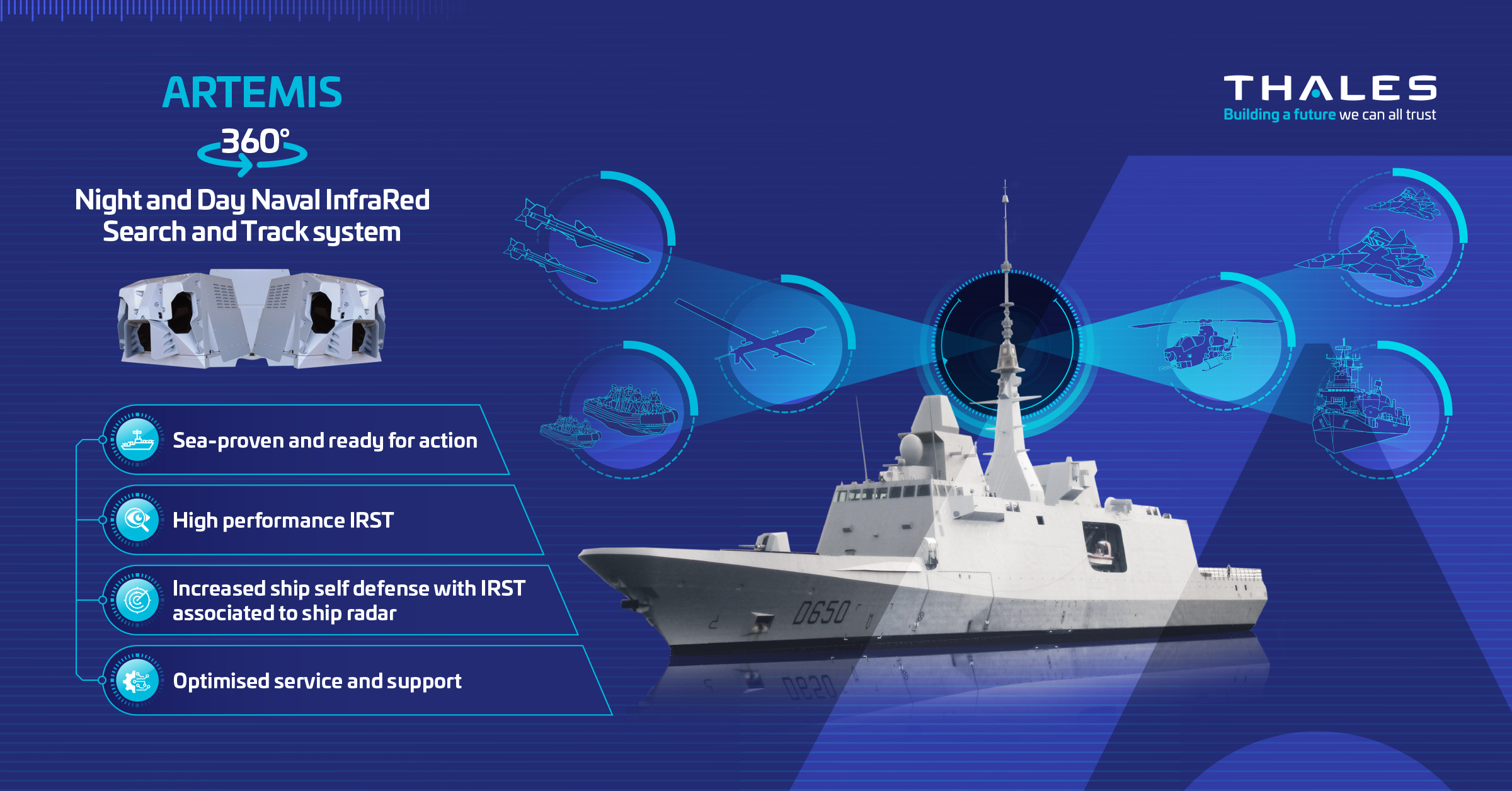The speed of light – IRST in high intensity combat
In full view
High intensity combat is no longer an abstract concept. It is here, today, brought on by the resurgence of peer and near-peer confrontation, and the intrinsic use of increasingly fast and unpredictable missile systems. As they begin to glide toward their target they may go in different directions, making it particularly difficult to detect, track and defeat. When multiple such systems are launched simultaneously, as part of a saturating attack, they can easily overwhelm ships’ defences.
In tackling such threats, early detection is, more than ever, of the essence. Leveraging decades of experience developing a wide range of sensors, Thales offers its customers a state-of-the-art, combat proven IRST system: ARTEMIS. ARTEMIS features a 360° field of view, real time high rate image processing and day/night surveillance with automatic detection, classification and tracking. Detecting the heat created by threats, such as missiles, aircraft, and ships, ARTEMIS provides constant monitoring without blind sectors.
The speed of light
Peer and near-peer competition also rimes with Electronic Warfare (EW) dominion. As electromagnetic systems, such as radars, continue to get smarter, it becomes increasingly difficult for systems and platforms to hide in the electromagnetic spectrum. Detecting without being detected is now yet another challenge in the growing complexity of high intensity warfare.
To this end, ARTEMIS provides a real tactical advantage. Not only does the system work in passive mode, therefore decreasing the chances of detection while uninterruptedly monitoring the horizon, it is also immune to electromagnetic jamming. As such, platforms fitted with ARTEMIS can maintain constant maritime domain awareness while remaining undetected.
Strength in numbers
In such complex environments, with multiple, fast, saturating threats creating new challenges as they constantly evolve, ships relying on integrated sensor fusion have a significant advantage: time. The combination of multiple sensors – such as IRST, radar and Electronic Support Measures (ESM) – allows them to detect and track threats early enough to select the best countermeasure.
ARTEMIS is the ideal complement to ships’ radars. Its ability to detect the heat generated by high speed missiles offers precious additional decision-making time. Additionally, capable of detecting threats coming simultaneously from different directions, ARTEMIS prevents saturation. Finally, discreet, resistant to jamming and featuring powerful Artificial Intelligence algorithms that contribute to reduce operators’ cognitive burden, it can work with other sensors to provide efficient, continuous target detection, analysis and classification for better prioritisation and neutralisation.



